If you want to offer products on Google Cloud Marketplace, you must meet the following listing requirements. You must also maintain operational best practices for the types of products that you're offering.
If you make changes to your product or organization that affect your compliance with these listing requirements or invalidate documentation that you provided to Google during onboarding, you must notify Google and submit your product for re-review and re-approval.
Requirements for your organization
Your organization must join and maintain good standing in Partner Advantage.
After your organization has joined Partner Advantage, you get access to Partner Hub.
Your organization must be incorporated in one of the supported regions.
Your organization must have a Cloud Marketplace vendor account and payment profile in good standing.
Requirements for your product
Your product must be production-ready (not alpha or beta) to be publicly listed and sold through Cloud Marketplace.
Your product must be enterprise-ready, including a professional online presence, a defined sales motion, customer support, and adherence to strong security best practices.
Your product must not include known vulnerabilities, viruses, spyware, Trojan horses, or other malicious code of any kind.
You must verify to Google Cloud through an approval process during onboarding that you host your software product primarily on Google Cloud. The following patterns are common approved use cases:
Pattern 1: Your entire product, and all of its supporting components, run entirely on Google Cloud. The following architecture diagram provides an example of this pattern.
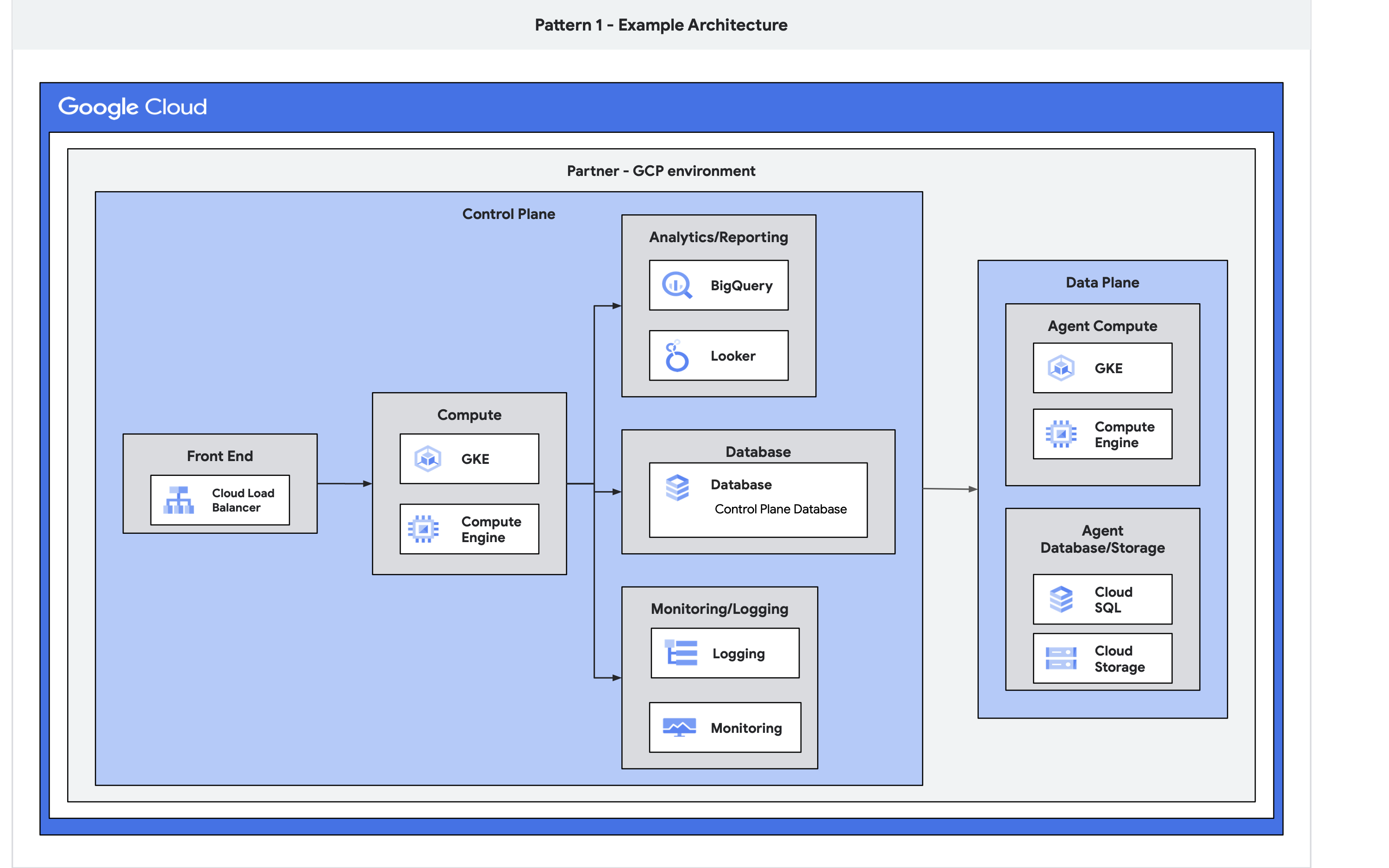
Pattern 2: Your product's compute or data plane runs on Google Cloud, but smaller control planes or support infrastructure, such as logging or AI inference, run on-premises or on another cloud. In this case, your Google Cloud-hosted compute or data plane must be the resource whose consumption increases the fastest when your users increase their consumption. The following architecture diagram provides an example of this pattern.
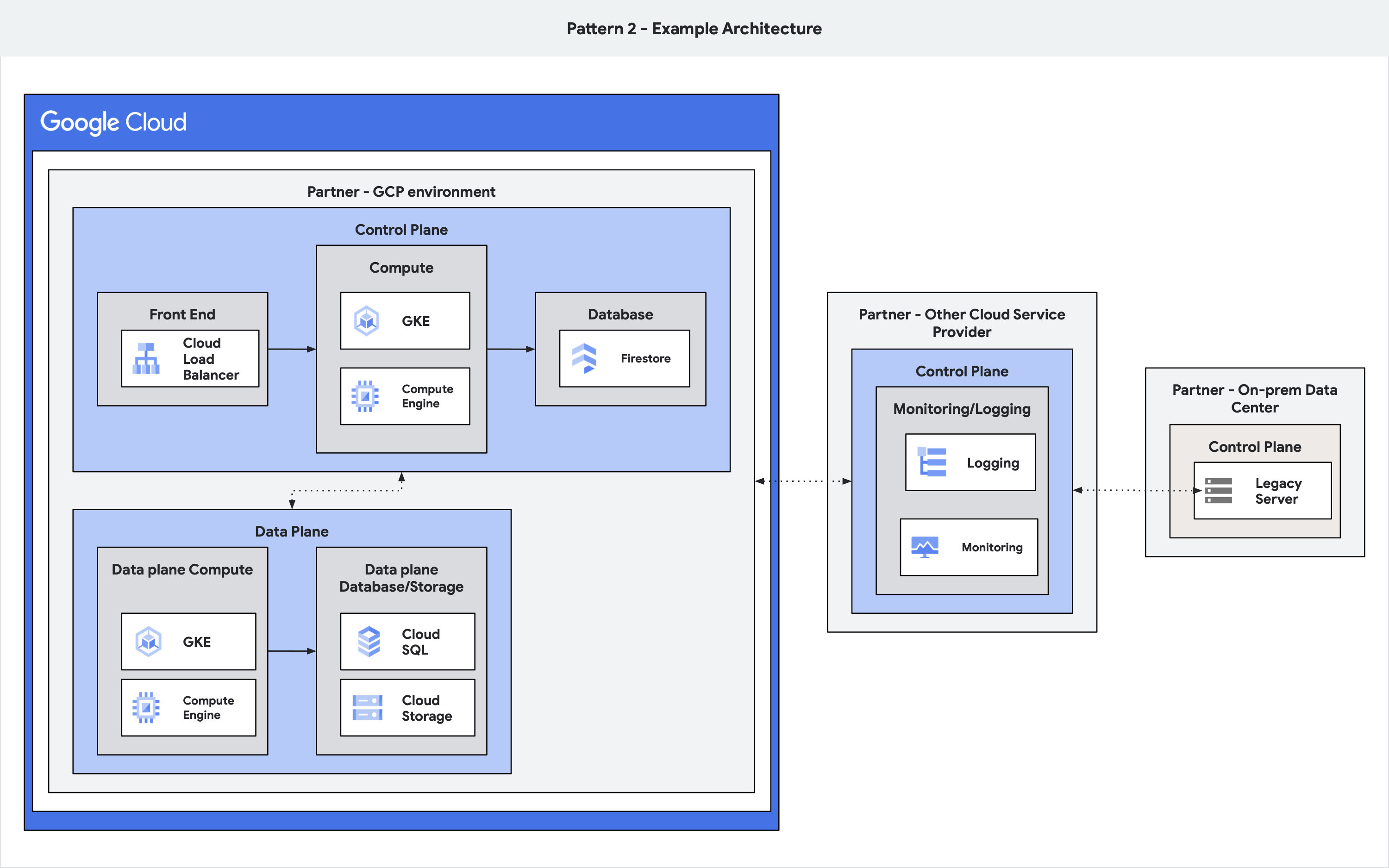
Pattern 3: Your storage, backup, replication, or data recovery (DR) product must replicate all data to Google Cloud, while the product's control plane can run on-premises or on other clouds. The following architecture diagram provides an example of this pattern.
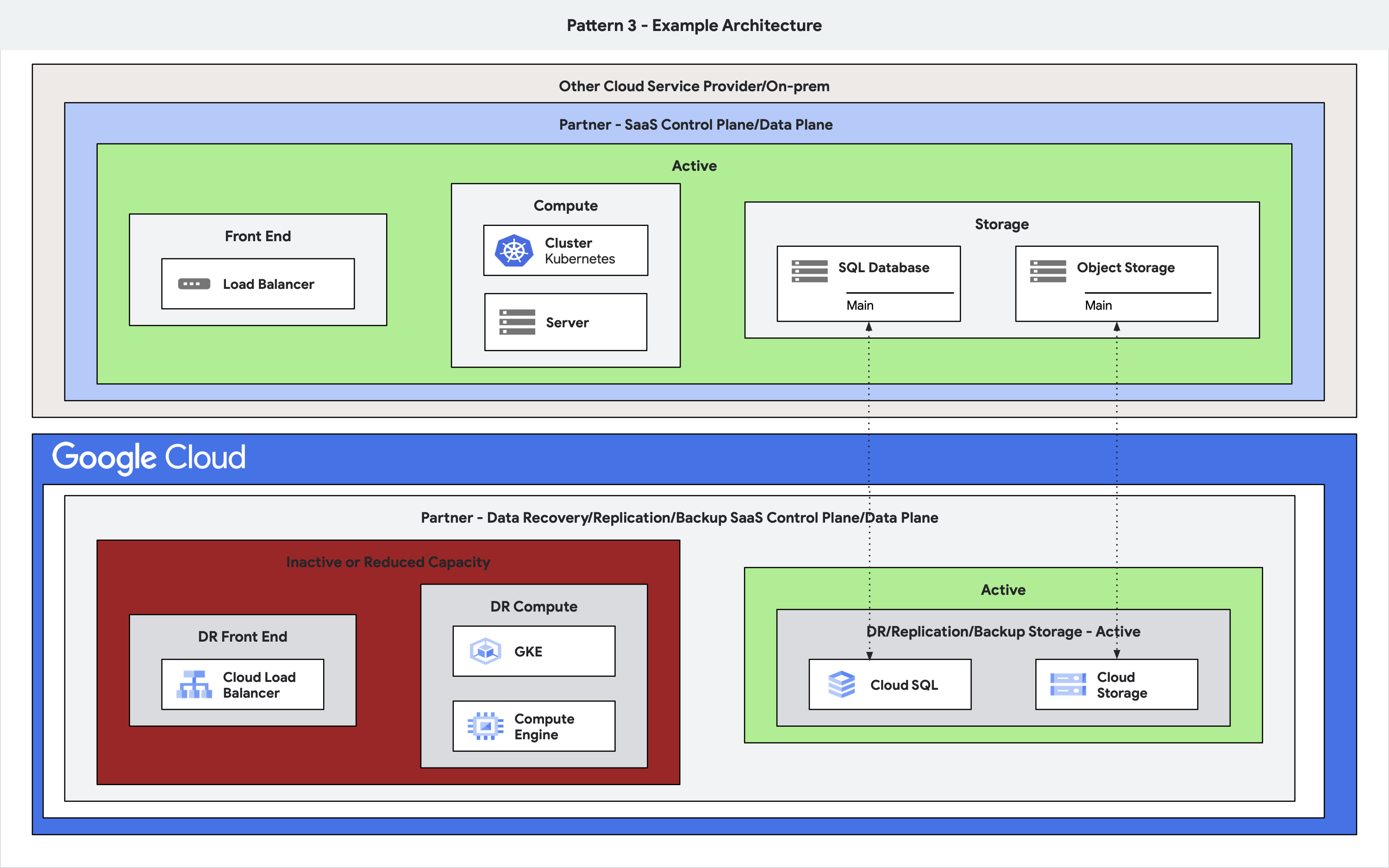
Pattern 4: Your product is migration tooling that has Google Cloud as its only destination for migration, but can run on-premises or on another cloud as a migration source. The following architecture diagram provides an example of this pattern.
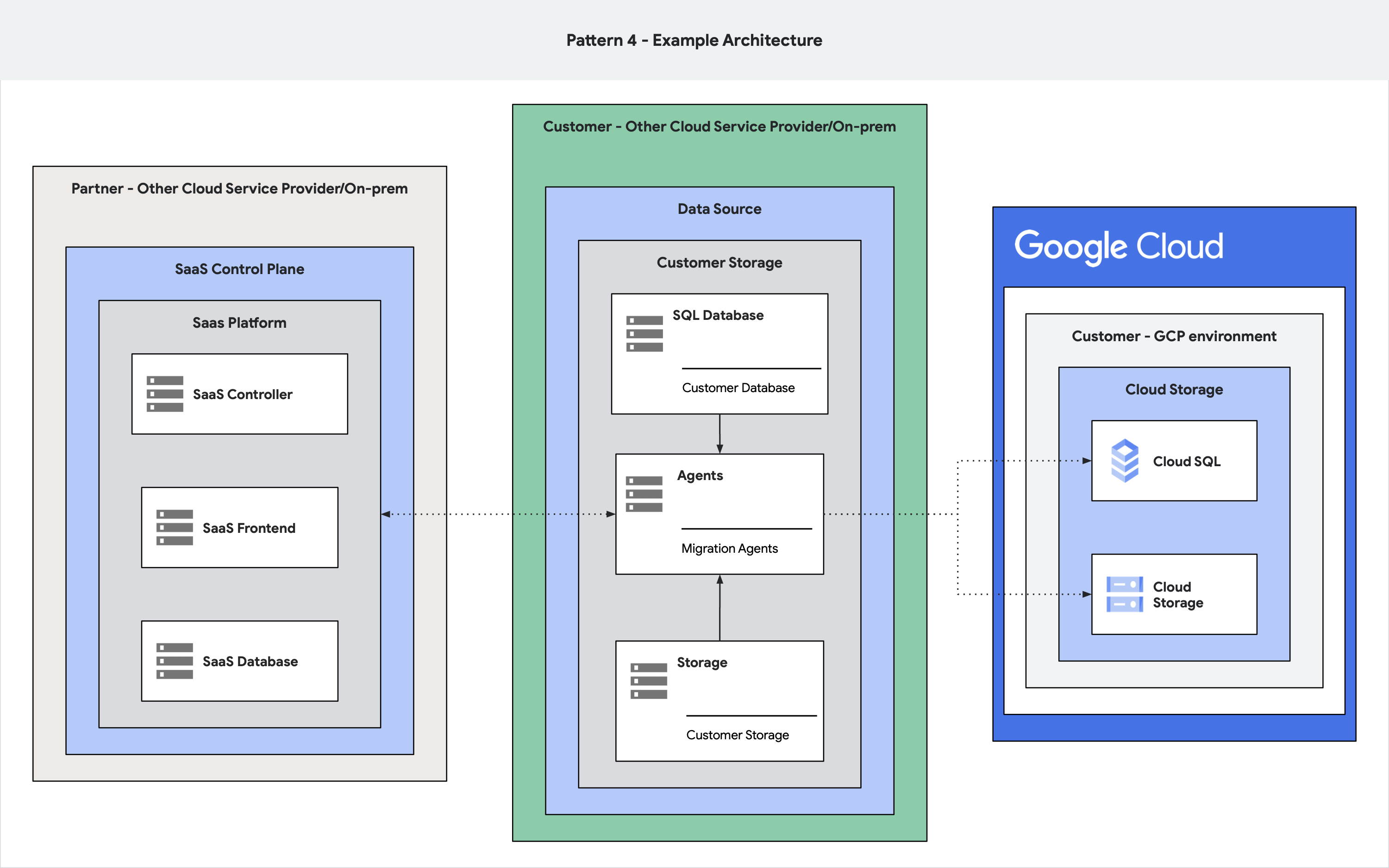
Pattern 5: Your product's compute or data plane runs on Google Cloud. Your product's monitoring or security agents can run on-premises or on another cloud, but they must send data to a Google Cloud-hosted environment for storage and analysis. The following architecture diagram provides an example of this pattern.
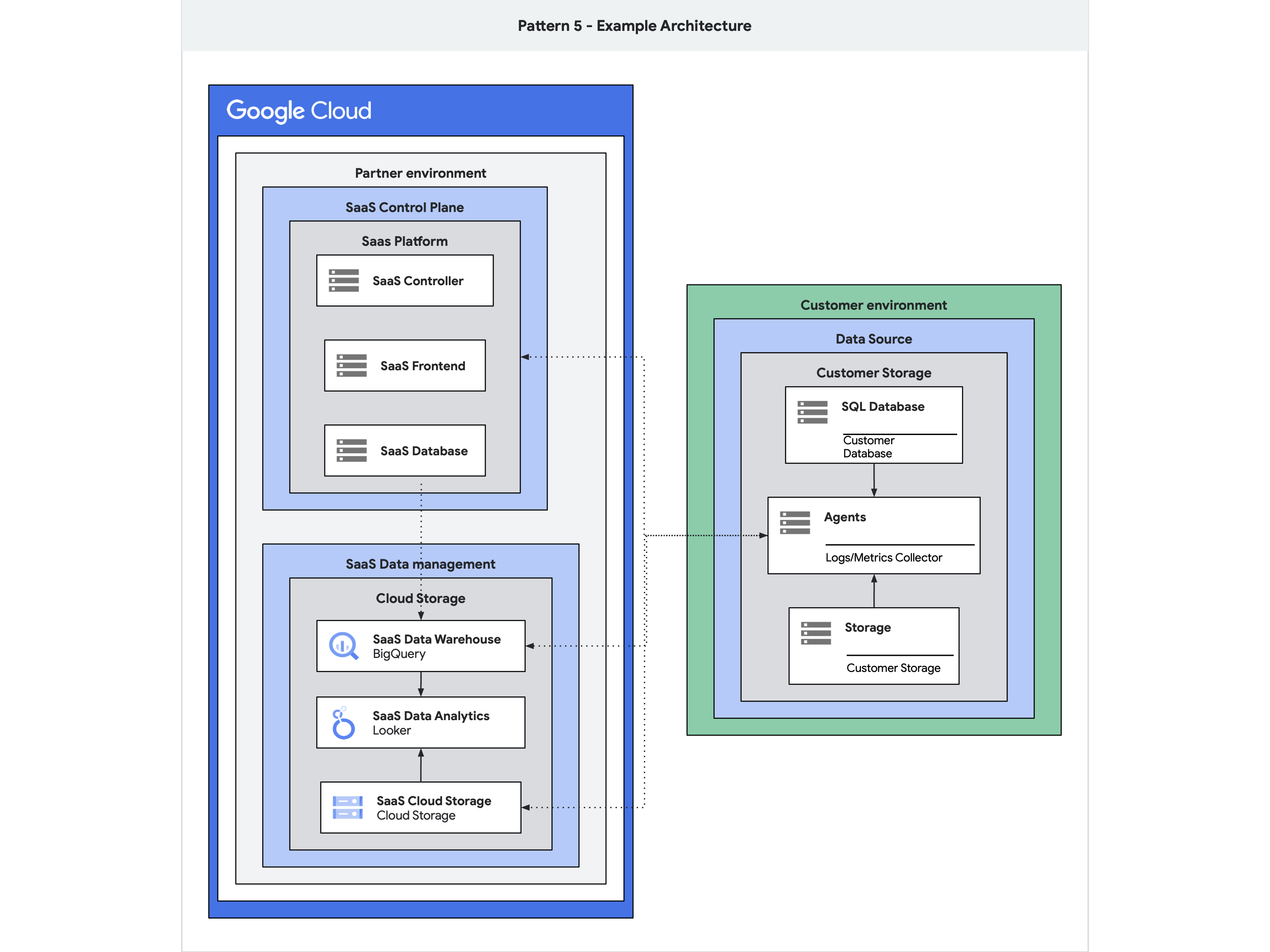
Pattern 6: Your product is a dataset hosted on and delivered through Google Cloud. The following architecture diagram provides an example of this pattern.
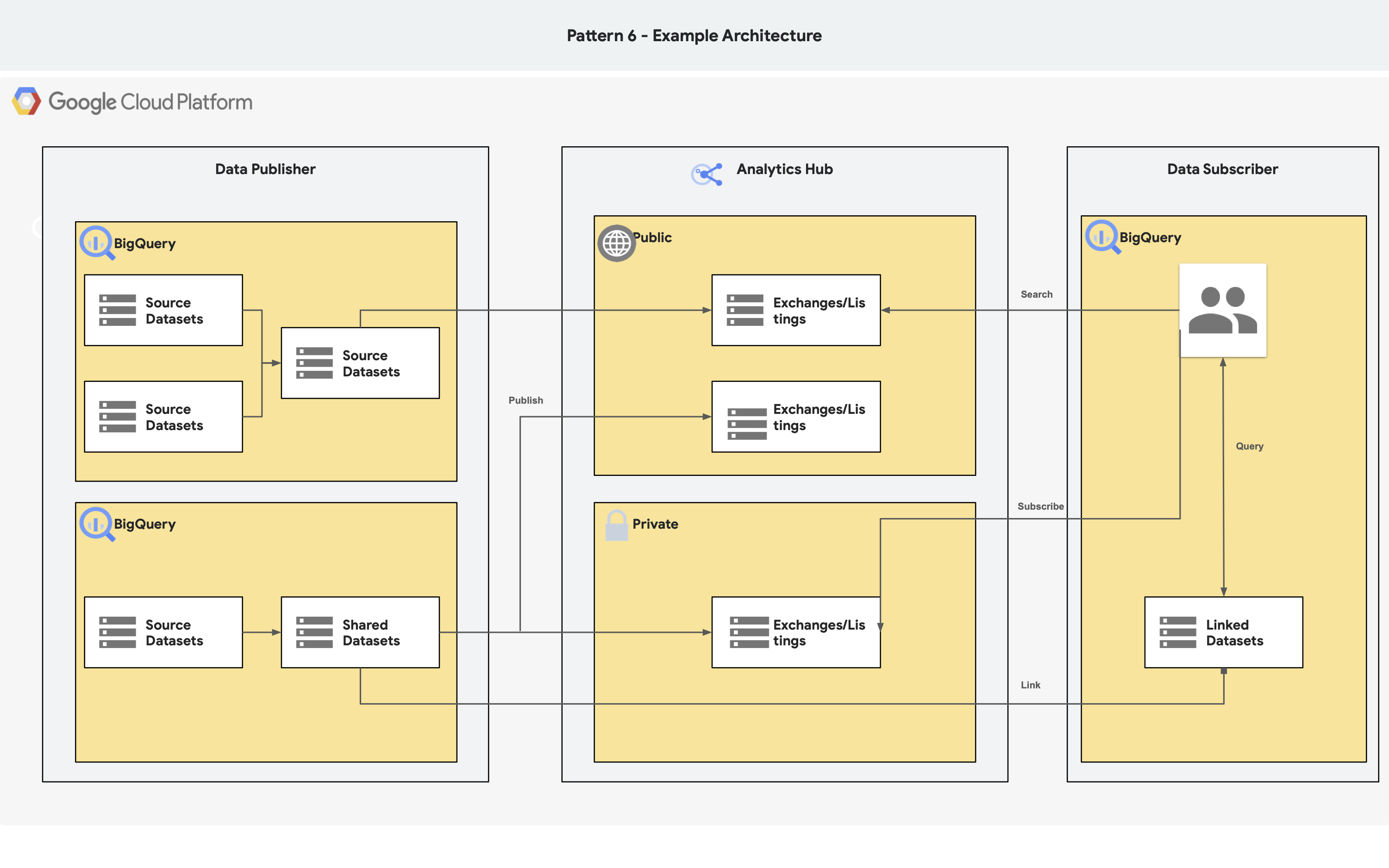
Pattern 7: Your product is a virtual machine (VM) or Kubernetes product that's deployed to and runs on devices connected to Google Distributed Cloud. Your product might connect to the internet to integrate with other Google Cloud-hosted apps or services. The following architecture diagram provides an example of this pattern.
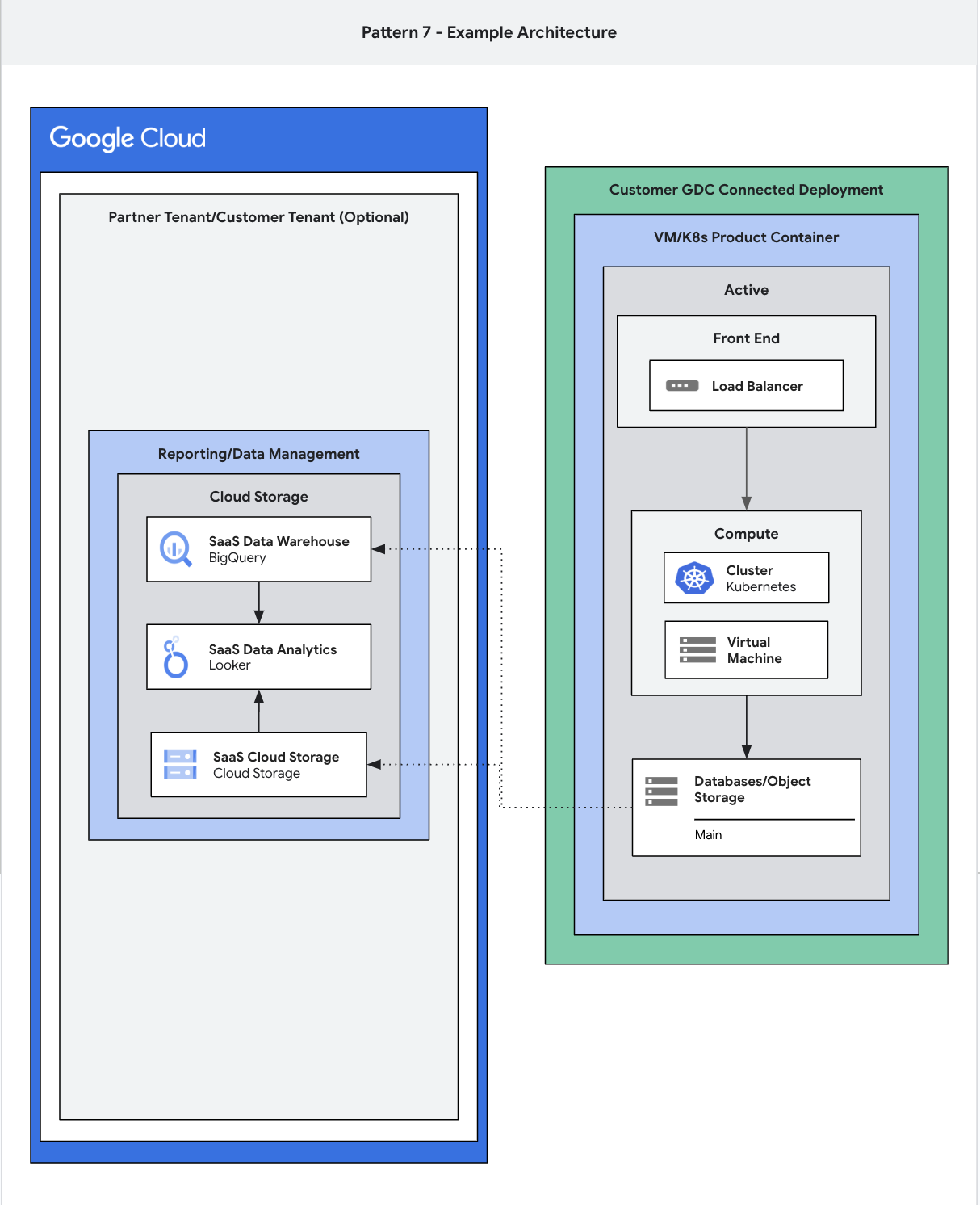
You must ensure that your products on Cloud Marketplace have the same capabilities and features as any versions of those products that you offer outside of Cloud Marketplace.
You must ensure that your data products don't contain any "personally identifiable sensitive information" as defined in the Protecting Americans' Data from Foreign Adversaries Act of 2024.
